August 15 2019. Royal Botanical Gardens, Hamilton, ON. I have agreed (volunteered actually) to help with a small-scale project to build a photo-library of tree-parts: leaves, buds, fruit, flowers etc; specific tree species and specimens that is, not just any old roadside scrub. It’ll be a task for all seasons and will refine my tree i.d skills. Today I got started with some beech, birch and hazel species (of which there are several) and it worked in well with some late summer birding.
I watched a small group of Yellow Warblers chasing each other in wide loops and swoops, characteristic Yellow Warbler behaviour I think. They are early fall migrants and most will have left us by month’s end and won’t return until early May. They’ll be anywhere from southern and coastal Mexico to Columbia in those eight months, so, if they belong to anyone, whose birds are they?
Three Blue-gray Gnatcatchers were a surprise find, enough to make them my Birds of the Day. They probably shouldn’t be such a surprise, they are not all that uncommon but they are small and more often than not birds of tree-tops so are easy to overlook. I managed to grab some photos of a couple of these fast-moving mites and am struck by how shabby they look in this season of moult.
Most adult North American birds go through a complete late summer moult, replacing all feathers. Feathers don’t last for ever and a complete moult takes a lot of energy and resources. This is the time to do it, food is plentiful, migration still several weeks away and the new generation is no longer dependent on them for survival. The pictures above of Blue-gray Gnatcatchers, a Red-eyed Vireo, an Eastern Kingbird and a Yellow Warbler, all taken today, show the gnatcatcher, the kingbird and the vireo in a state of moult-induced dishabille while the Yellow Warbler is shipshape and ready to start the journey any day now. (It’s worth noting though that the pointed tail feathers suggest the Yellow Warbler is a youngster, and if so, naturally its plumage is fresh.)
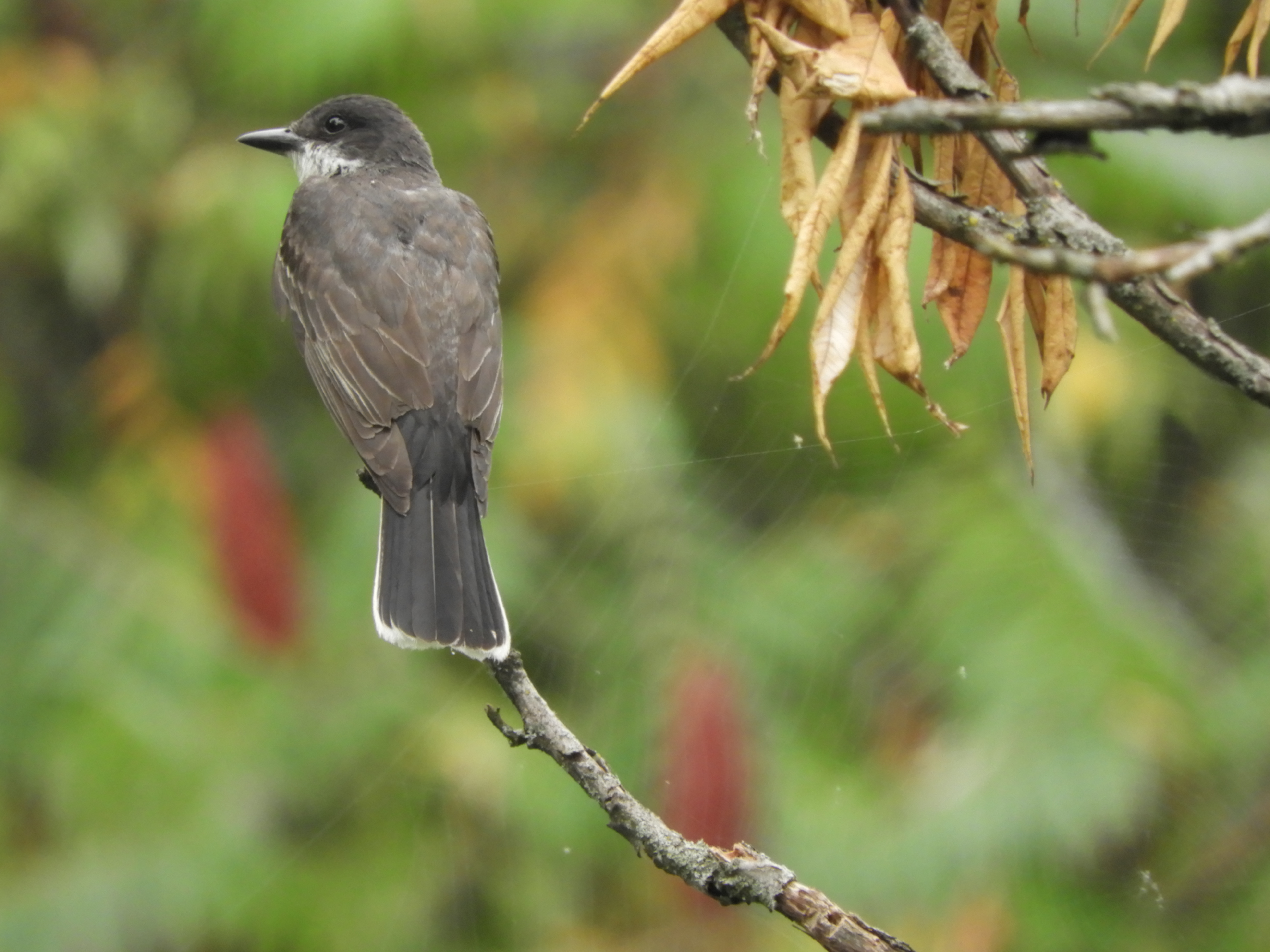
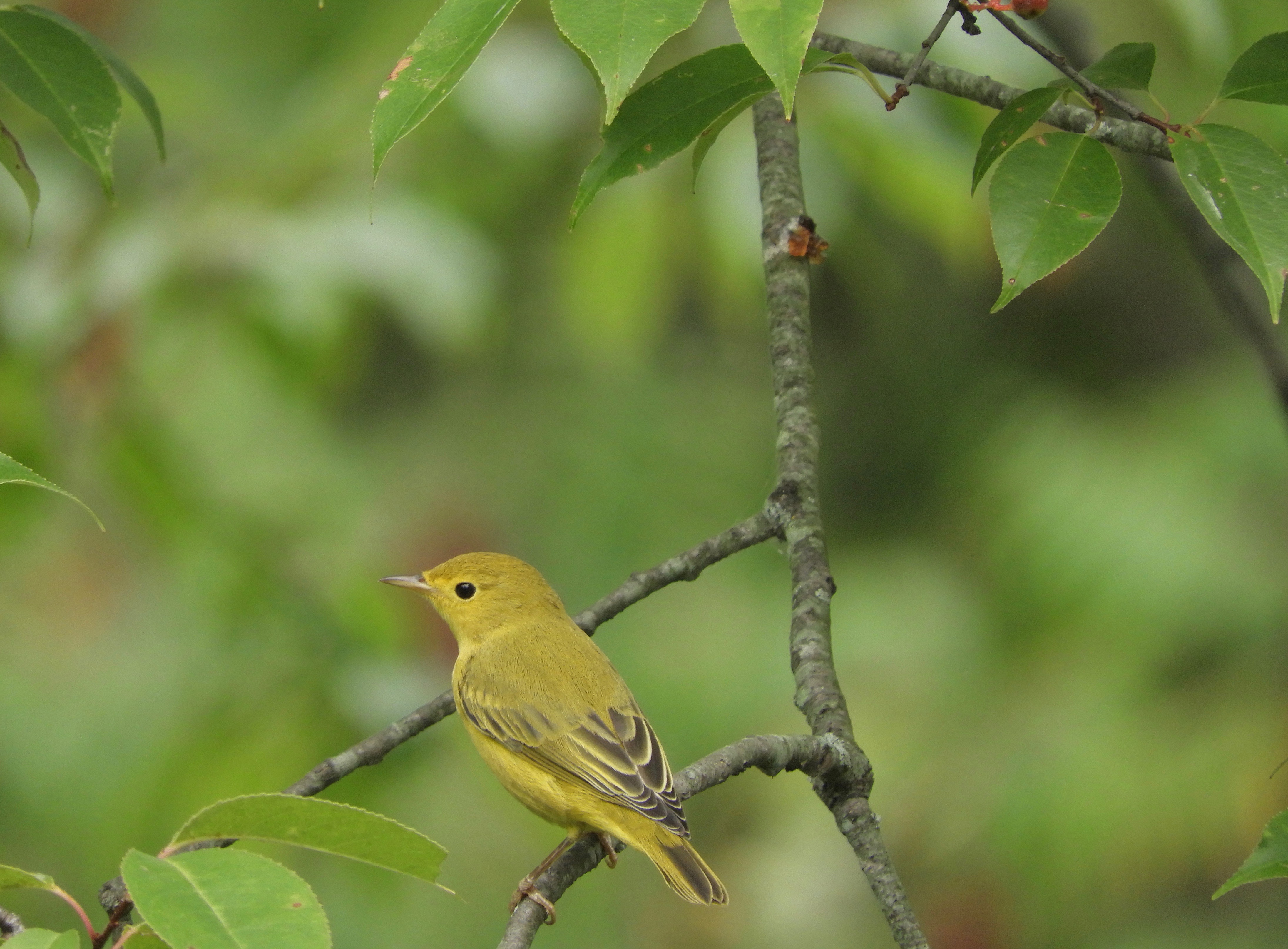
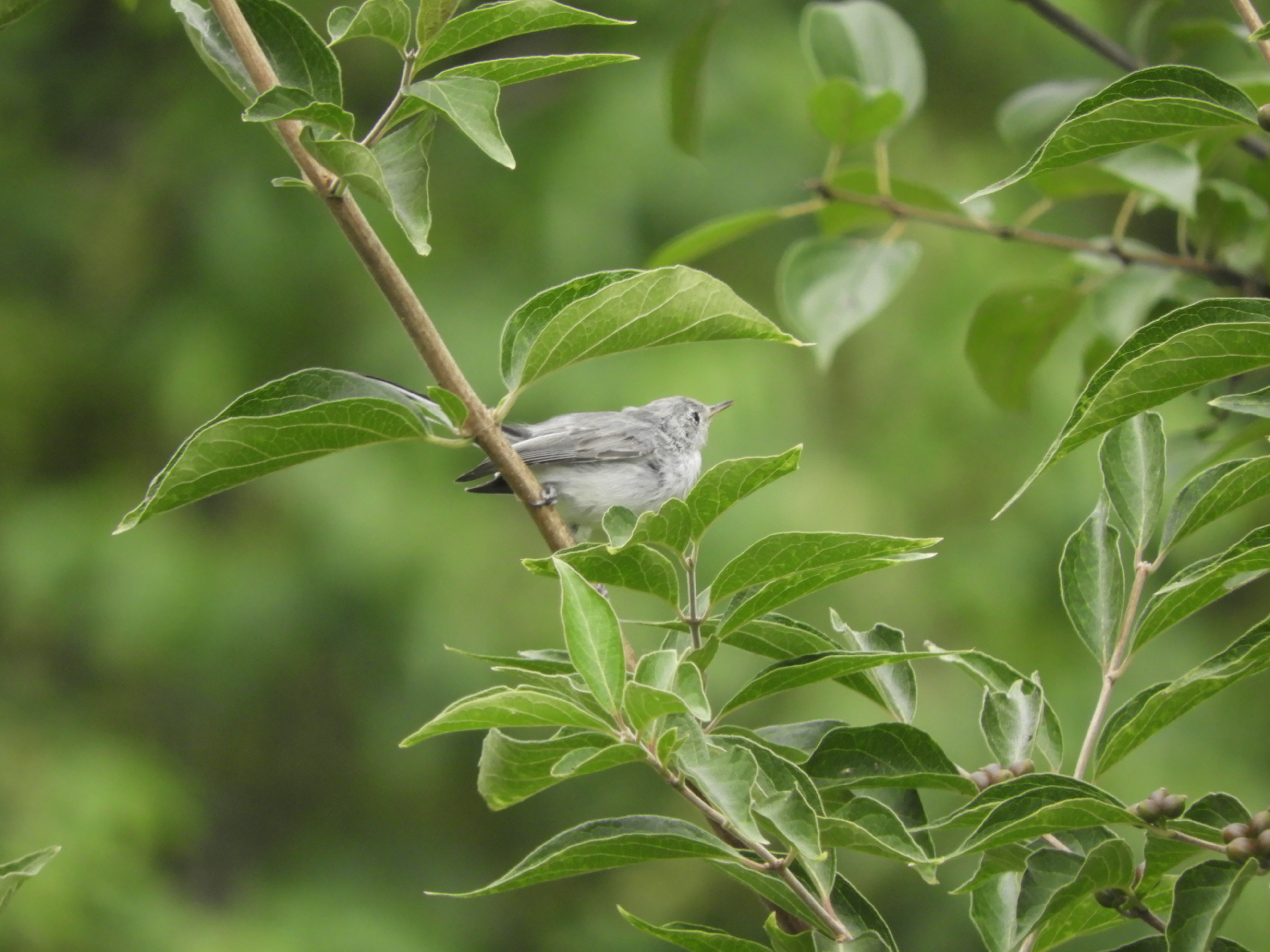
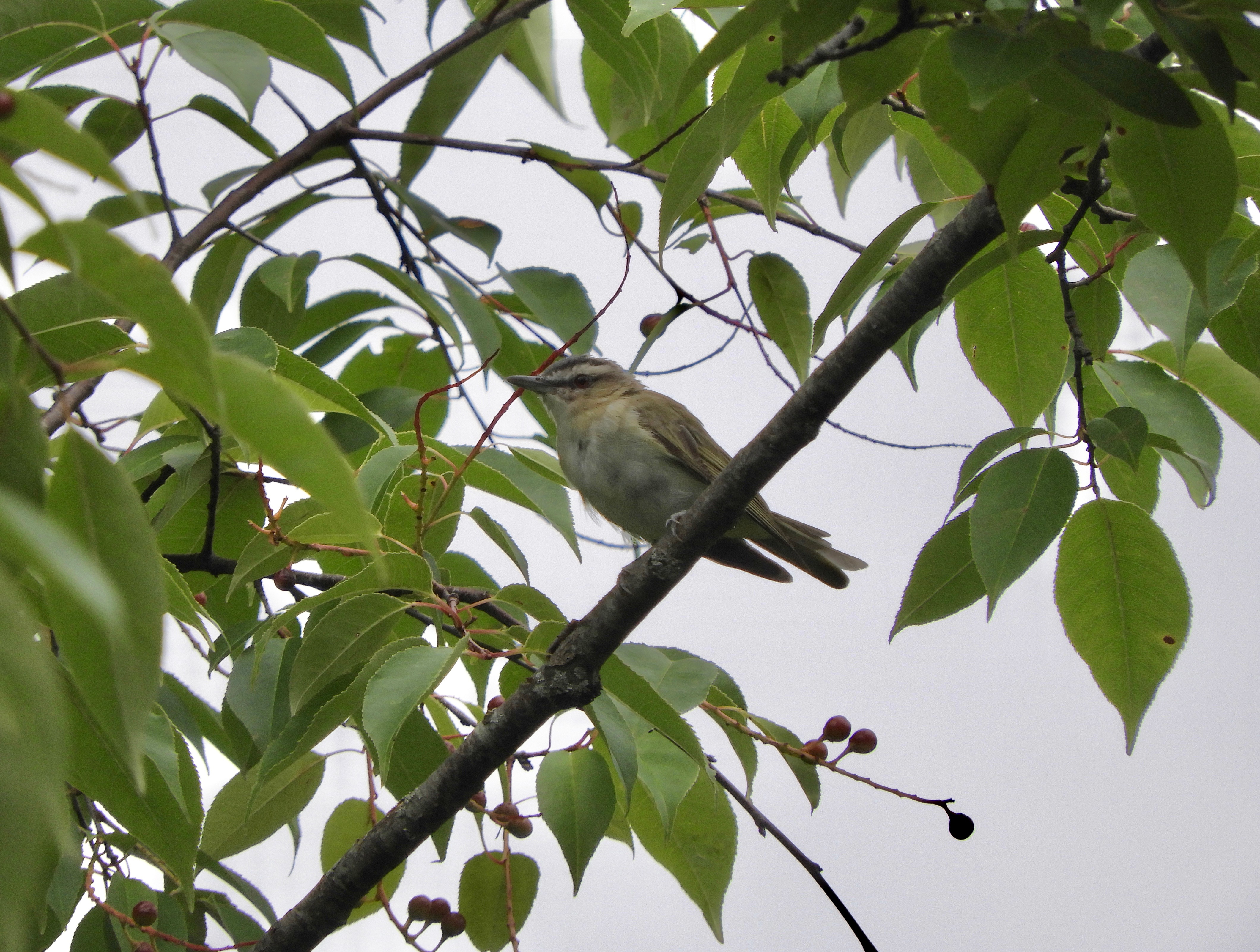
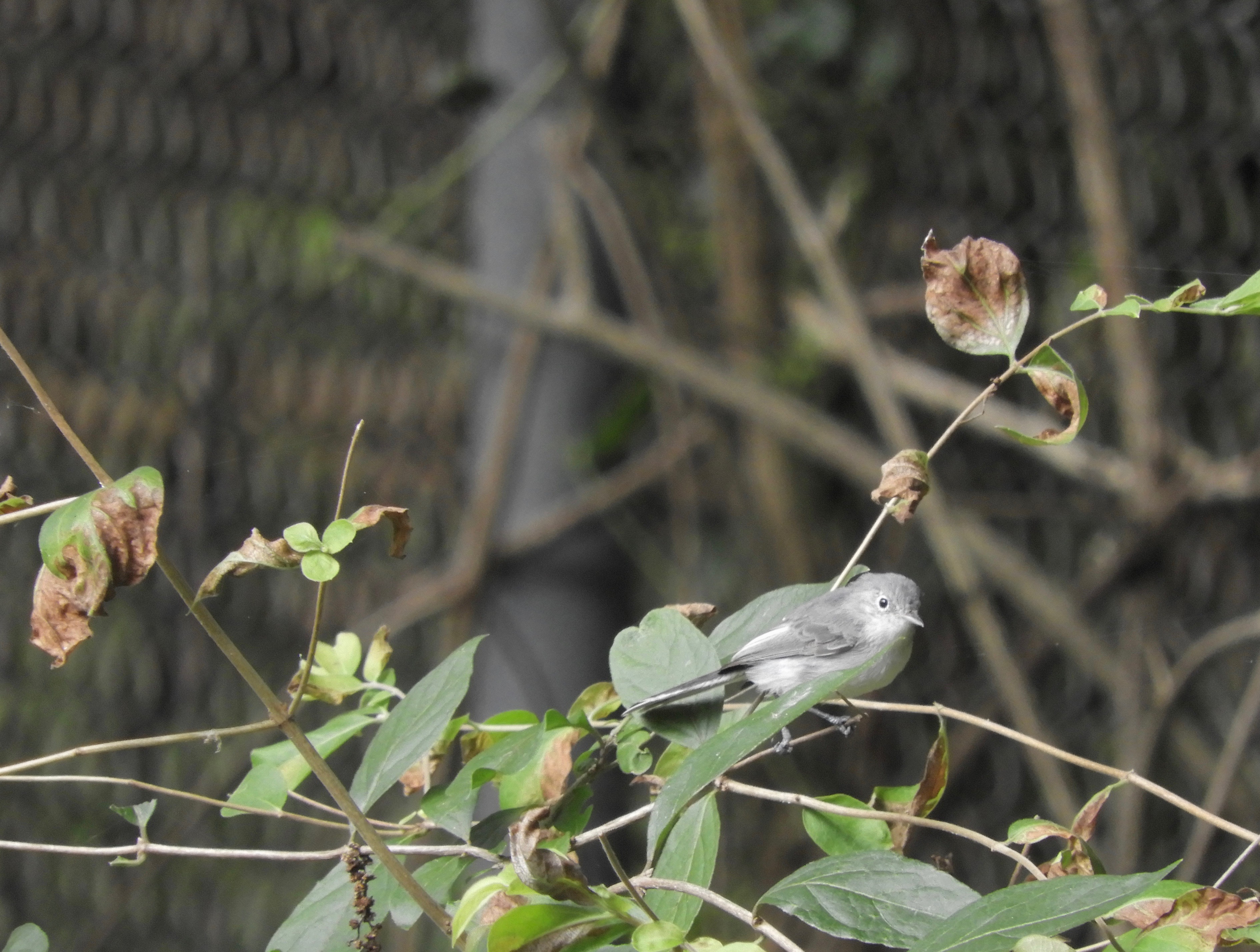
Hi peter,
where were you in the RBG?
Thanks,
Liam T
I was on the north shore of Cootes. Also known as Wadiwyziwin Trail – or something like that.
I haven’t been reading your posts very often and I’m so sorry. I enjoy the lively and engaging prose that is always so evocative of the pleasure that I’ve had on my rare birding outings. Thanks Peter.
Btw what camera are you using? I can even see spider web on your Eastern Kingbird picture.
I use a Nikon Coolpix B 700. I graduated to it from a Nikon P510. In some ways I was happier with the earlier model. The B700 has tremendous features, way beyond my needs or aspirations, but fulfills my needs without effort. I can get lost in its labyrinths and conclude that when it’s good it’s very very good but when it’s bad it’s horrid. It is not an expensive camera- about $500 I think. I think the model is no longer being manufactured, but no doubt available somewhere on line.